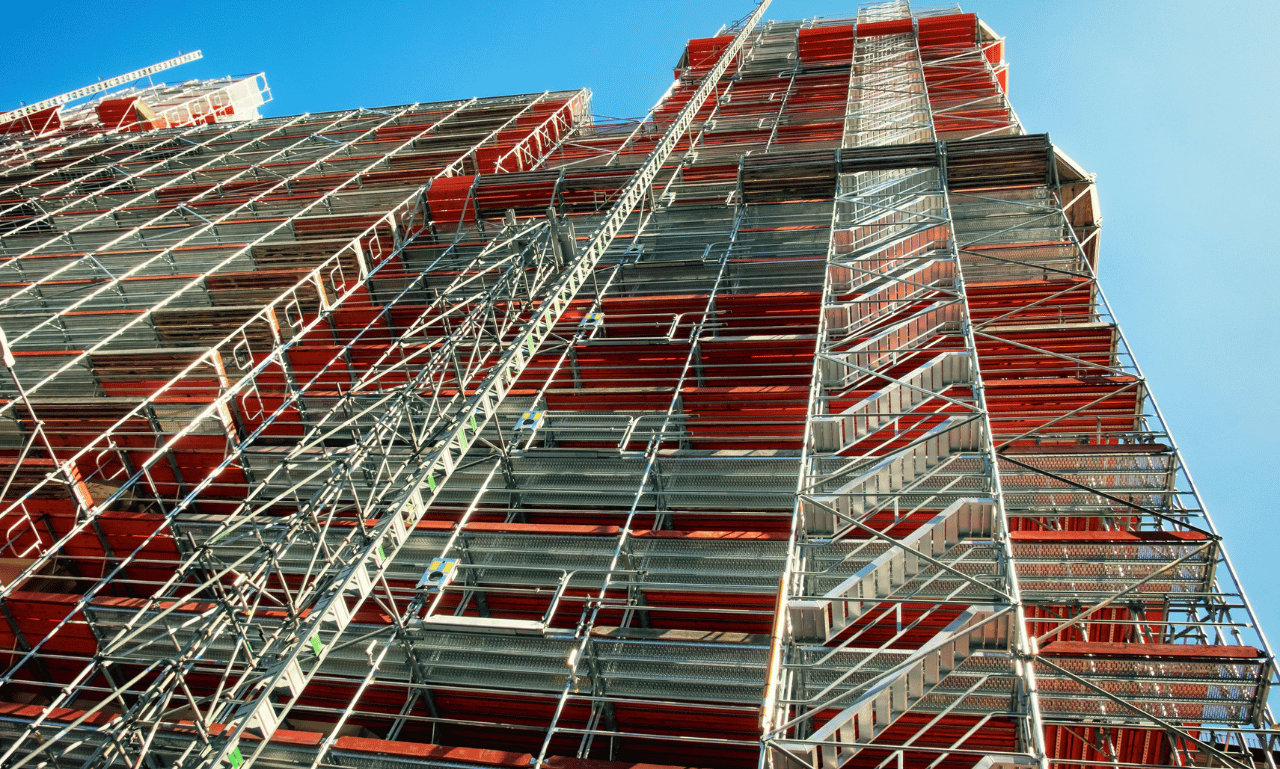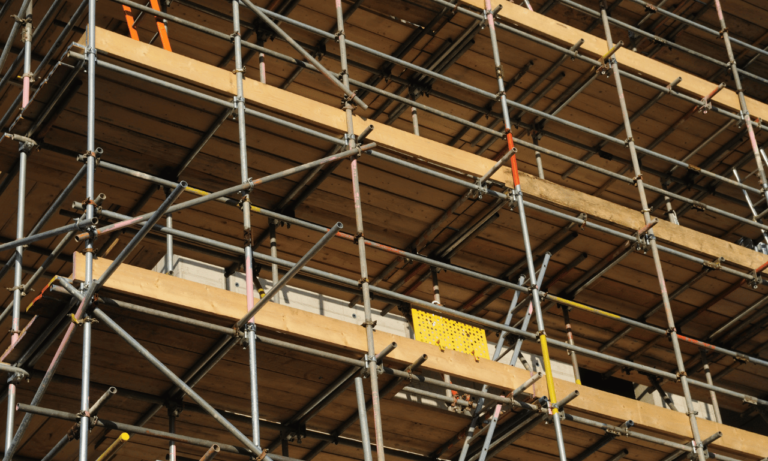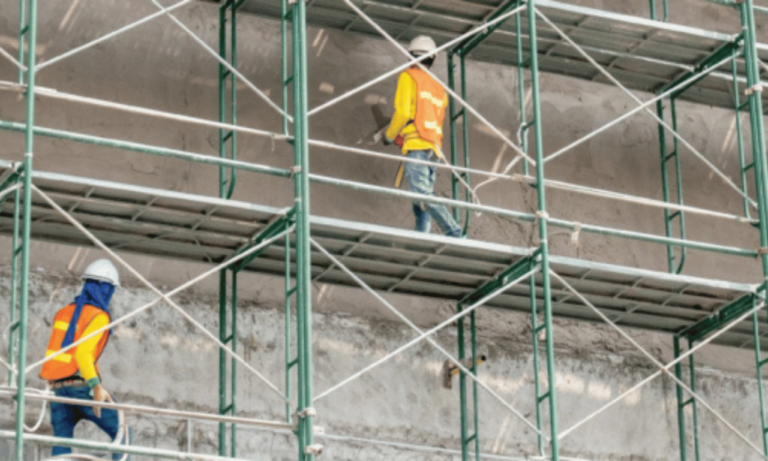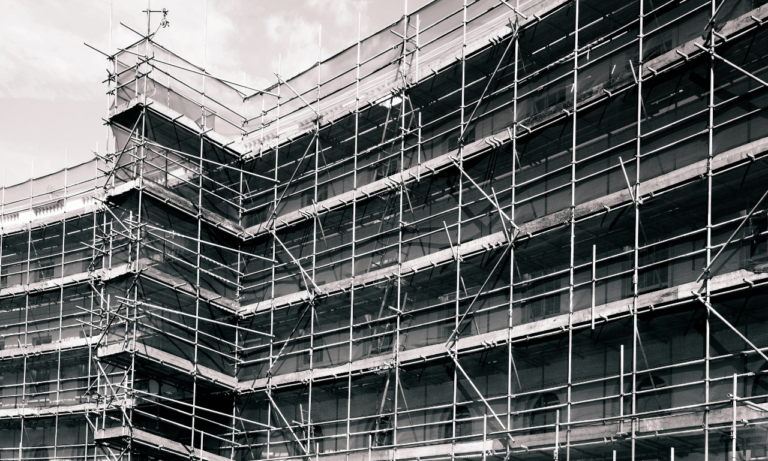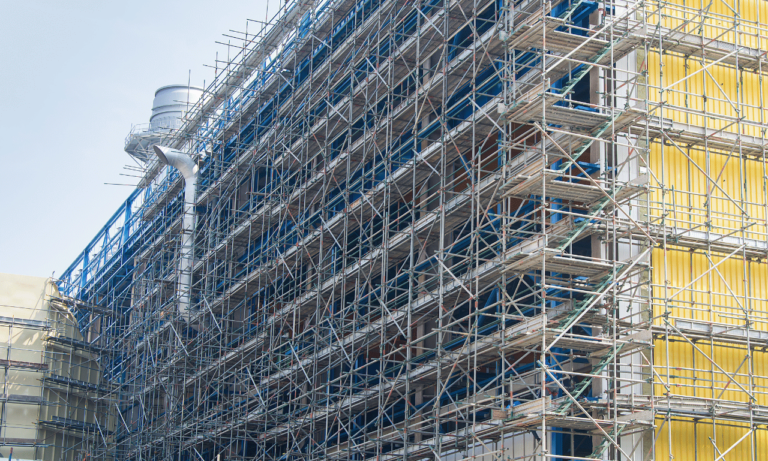Phone:
(+65)8319-0742
Independent Tied Scaffolds, also known as suspended and supported scaffolds, are temporary elevated platforms used in various industries for supporting employees and materials during construction, maintenance, and renovation projects. These scaffolds are regulated by safety standards and guidelines to ensure the well-being of workers and prevent accidents. In this guide, we will provide essential information on the safety measures and setup protocols for Independent Tied Scaffolds, including compliance with regulations, proper design and construction, and the importance of qualified personnel in the erection, alteration, and dismantling processes.
In the ever-evolving world of construction, scaffolding plays a crucial role in ensuring workers can perform tasks at various heights safely and efficiently. Among the myriad of scaffolding types, the independent tied scaffold stands out due to its unique structure and versatility. This guide will walk you through everything you need to know about independent tied scaffolds, from their setup to their maintenance, ensuring that you can utilize them safely and effectively on your construction projects.
Key Takeaways:
- Independent Tied Scaffolds are temporary structures used in construction, maintenance, and renovation projects.
- Safety measures and proper setup protocols are essential to prevent accidents and ensure worker well-being.
- Compliance with scaffold regulations and guidelines is crucial for the safe use of Independent Tied Scaffolds.
- Qualified personnel should be involved in the design, erection, alteration, and dismantling processes.
- Regular inspections and maintenance are necessary to identify hazards and ensure scaffold integrity.
Scope and Exemptions
When it comes to Independent Tied Scaffolds, it’s essential to understand their scope and exemptions. These scaffolds are categorized into suspended scaffolds and supported scaffolds, along with their corresponding supporting structures and anchorage points.
However, not all platforms fall under the regulations outlined in Chapter 296-874, WAC. A number of exempt platforms exist, which are not subject to the same requirements. These exempt platforms include:
- Manually propelled elevating work platforms
- Self-propelled elevating work platforms
- Boom-supported elevating work platforms
- Aerial lifts
- Crane or derrick suspended personnel platforms
- Personnel platforms supported by powered industrial trucks (PITs)
It is important to consult the General Safety and Health Standards to understand the additional requirements and regulations associated with these exempt platforms.
Understanding the scope and exemption criteria for Independent Tied Scaffolds is crucial to ensure compliance and maintain a safe working environment. Being aware of the types of scaffolds covered and the platforms that may not fall under the same regulations helps in implementing the appropriate safety measures while engaging in construction, maintenance, or renovation projects.
What is an Independent Tied Scaffold?
How does an independent tied scaffold differ from other types of scaffolding?
An independent tied scaffold, sometimes known as a bricklayer’s scaffold, is a specific type of scaffold that stands independently from the building structure it serves. Unlike the putlog scaffold, which relies on the wall for support, the independent tied scaffold consists of two rows of standards that provide its own support system. These standards are joined together with horizontal ledgers and transoms, creating a stable and secure working platform. This independence allows for greater flexibility and safety, especially when working on brickwork or other construction tasks that require direct access to the building facade.
What are the key components of an independent tied scaffold?
The independent tied scaffold is composed of several critical components that ensure its stability and functionality. The two rows of standards are the vertical supports, while ledgers connect these standards horizontally. Transoms are placed at right angles to the ledgers, providing additional support and forming the base for the scaffold platforms. Couplers are used to join these components securely. Braces are also integrated into the structure to enhance the overall stability and integrity of the scaffolding, ensuring it can withstand the demands of construction activities.
Why choose an independent tied scaffold for construction projects?
Choosing an independent tied scaffold for your construction project offers several advantages. Its ability to stand independently from the building makes it suitable for projects where the building itself cannot support the scaffold. This type of scaffold allows for easy access to the entire building facade without obstruction, making it ideal for bricklaying and other exterior tasks. Additionally, its robust structure and ease of erection make it a preferred choice among construction professionals looking for a reliable and flexible scaffold system.
How Does an Independent Tied Scaffold Compare to Other Scaffold Systems?
What are the differences between independent tied and putlog scaffolds?
Independent tied scaffolds and putlog scaffolds serve similar purposes but differ in their support mechanisms. While independent tied scaffolds stand independently with two rows of standards, putlog scaffolds rely on the building structure for support, using putlogs inserted into the wall. This reliance on the building can limit the putlog scaffold’s flexibility and accessibility. Independent tied scaffolds offer greater versatility and are better suited for projects where the building cannot provide adequate support.
How does a birdcage scaffold differ from an independent tied scaffold?
A birdcage scaffold, sometimes referred to simply as a birdcage, is designed for tasks that require a large, open working platform, such as ceiling work. It consists of multiple rows of standards and ledgers interconnected to form a grid-like structure. In contrast, an independent tied scaffold is primarily used for facade work and consists of two rows of standards. The birdcage scaffold is not tied to the building, whereas an independent tied scaffold is secured with ties, providing additional stability for facade work.
When should a slung scaffolding or suspended scaffold be used instead?
Slung scaffolding and suspended scaffolds are suitable for projects where access from below is limited or impractical. Slung scaffolding is suspended by slings from a higher point, while suspended scaffolds are raised and lowered using ropes or cables. These types of scaffolds are ideal for tasks like painting or maintenance on high-rise buildings or structures with challenging access points. They provide flexibility in height adjustment but require careful attention to safety during use.
What are the Best Practices for Scaffold Maintenance?
How often should scaffolds be inspected and maintained?
Regular maintenance and inspection are crucial for the longevity and safety of scaffolds. Conduct inspections before each use and after any significant weather events or modifications. Scheduled inspections should occur at least every week, with more frequent checks during heavy use periods. Maintenance should include cleaning, lubrication of moving parts, and replacement of any damaged components to ensure the scaffold remains in optimal condition.
What are the signs of wear and damage to look for in scaffold components?
Signs of wear and damage in scaffold components can include rust or corrosion on metal parts, cracks or fractures in the standards, ledgers, or transoms, and loose or damaged couplers and fittings. Additionally, check for any signs of bending or warping in the structural elements, as these can compromise the scaffold’s integrity. Address any identified issues immediately to prevent accidents and ensure the scaffold remains safe for use.
How to safely dismantle an independent tied scaffold?
Safely dismantling an independent tied scaffold involves reversing the erection process while adhering to safety protocols. Begin by removing any accessories and fittings, followed by the braces and ties. Carefully disassemble the working platforms, ledgers, and transoms, ensuring each component is lowered safely to the ground. Finally, dismantle the rows of standards, taking care to maintain stability throughout the process. Ensure all workers involved in dismantling are equipped with the necessary PPE and follow safety guidelines to prevent accidents.
General Requirements for Scaffolds
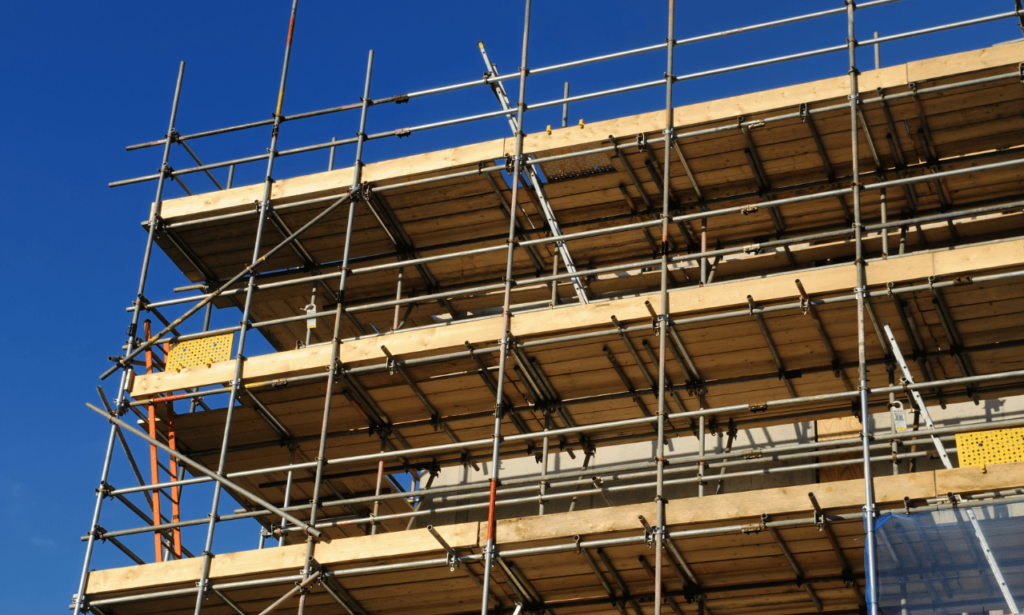
To ensure the safety and integrity of Independent Tied Scaffolds, it is crucial to adhere to several general requirements. These requirements encompass scaffold design, qualified personnel, intermixing scaffold components, platform planking, and fall protection measures.
Scaffold Design
The design of a scaffold is a critical aspect of its safety and stability. It is essential that qualified individuals handle the design and construction process. These individuals possess the necessary knowledge and expertise to ensure that the scaffold meets industry standards and can withstand the intended load securely.
Qualified Person
A qualified person is responsible for overseeing the erection, movement, alteration, and dismantling of scaffolds. This individual has the necessary training and experience to manage these tasks safely and effectively. Their presence on-site ensures that each step of the process is executed in compliance with safety regulations.
Competent Person
A competent person is a vital role in scaffold operations. This person is responsible for supervising the erection, movement, alteration, and dismantling of scaffolds. They have the knowledge and ability to identify and correct any hazards or issues that may arise during these processes.
Intermixing Scaffold Components
When assembling a scaffold, it is important to use compatible scaffold components. Intermixing components from different systems or manufacturers can compromise the scaffold’s structural integrity and pose a safety risk. Components should fit together seamlessly without the need for force or modification.
Platform Planking
An essential requirement for scaffold platforms is ensuring that they are fully planked or decked. The planks or decks should be securely fastened to prevent any displacement during use. Proper spacing between units and between the platform and uprights should be maintained to avoid potential hazards.
Fall Protection Requirements
Appropriate fall protection measures must be in place to mitigate the risk of falls from scaffolds. These measures vary based on the specific requirements outlined in different chapters and sections. Fall protection systems such as guardrails, personal fall arrest systems, or safety nets should be used to ensure the safety of workers.
By adhering to these general requirements, scaffold users can create a safe and secure working environment for their employees. These measures not only ensure compliance with regulations but also contribute to preventing accidents and injuries.
Minimum Width Requirements and Platform Connectivity
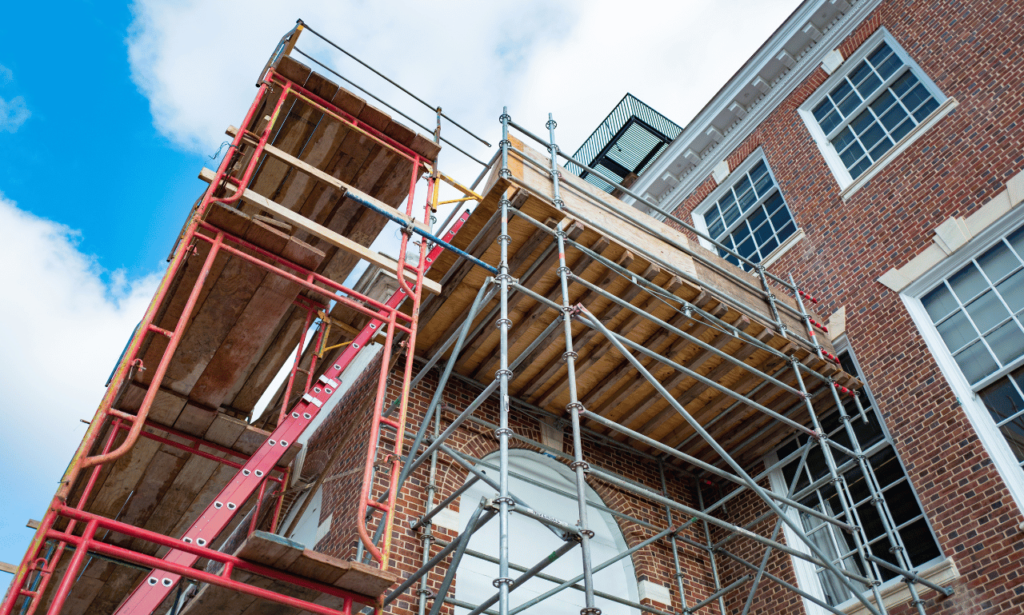
Scaffold platforms play a crucial role in providing safe and stable work surfaces for workers in various industries. It is important to ensure that these platforms meet minimum width requirements to ensure proper functionality and safety.
Minimum Width Requirements
According to industry standards, the minimum width requirements for scaffold platforms vary depending on the type of scaffold being used. Ladder jack, pump jack, roof bracket, and top plate bracket scaffolds require a minimum platform width of 12 inches. Boatswain’s chair, on the other hand, does not have a specific minimum width requirement. All other types of scaffolds should have a minimum width of 18 inches.
It is worth noting that these width requirements are subject to exceptions and certain conditions. For example, in situations where space constraints or other factors make it impractical to meet the minimum width requirement, alternative measures may be implemented to ensure the safety of the workers.
Platform Overlap and Platform Butting
When scaffolds need to provide a longer platform, it is common practice to overlap the platforms. In such cases, the overlap should be over a support and be at least 12 inches or securely connected. This ensures that the extended platform remains stable and can support the intended load.
Platform butting is another important consideration when connecting scaffold platforms. When two platforms are abutted, each end of the abutted platform should rest on a separate support surface. This helps distribute the load evenly and prevents any instability or platform failure.
Platform Sag
Platform sag refers to the vertical deflection or downward bending of a loaded scaffold platform. It is important to ensure that platform sag remains within acceptable limits to maintain safety and stability. As a general guideline, a loaded platform should sag no more than 1/60 of its span, preventing excessive flexing or instability.
Safe Access to Scaffolds
In addition to meeting minimum width requirements and ensuring platform connectivity, providing safe access to scaffolds is vital for workers. Various means of safe access can be implemented, including:
- Portable ladders
- Stairway-type ladders
- Ladder stands
- Stair towers
- Ramps
- Walkways
- Integral prefabricated scaffold access
- Direct access from other surfaces
By offering safe and convenient access points, workers can easily and securely reach the scaffold platforms, reducing the risk of accidents or injuries.
The Importance of Compliance
Complying with minimum width requirements and ensuring proper platform connectivity is crucial for maintaining a safe working environment. It helps prevent accidents, minimizes the risk of platform failure, and ensures the stability and integrity of the scaffolding system.
By following these guidelines and considering factors such as platform overlap, platform butting, platform sag, and safe access, workers can confidently and securely utilize scaffold platforms, enabling efficient and safe completion of tasks at heights.
Scaffold Inspection, Maintenance, and Storage
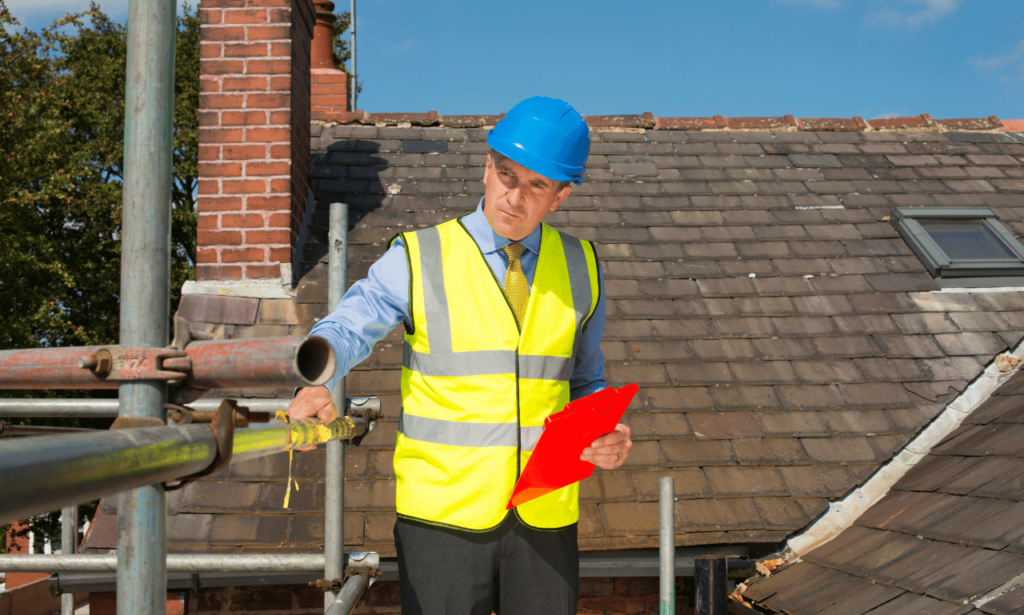
Regular inspections play a crucial role in ensuring the safety and reliability of Independent Tied Scaffolds. By conducting thorough scaffold inspections, competent personnel can identify potential hazards or defects that may compromise the structural integrity and stability of the scaffold.
During scaffold inspections, it is essential to assess the condition of all scaffold components, including the frames, platforms, guardrails, and bracing. Any signs of damage, excessive wear and tear, or loose connections should be promptly addressed through scaffold repair or replacement to maintain a safe working environment.
Scaffold inspections should be carried out at regular intervals, as specified by safety regulations and industry best practices. These inspections should be documented, with a comprehensive record of findings, maintenance activities, and any necessary repairs or replacements.
In addition to inspections, proper scaffold maintenance is vital for prolonging the lifespan and functionality of the scaffold. Regular cleaning, removing debris, and lubricating moving parts help prevent corrosion, improve efficiency, and ensure smooth operation. Following scaffold manufacturer guidelines for maintenance practices is crucial to optimize the scaffold’s performance and prevent unnecessary wear and tear.
When the scaffold is not in use, appropriate storage practices should be followed to protect it from damage and deterioration. Scaffolds should be stored in designated areas that are protected from harsh weather conditions and potential impacts from other equipment or materials. Implementing proper storage protocols not only prevents damage but also simplifies future scaffold assembly and reduces the risk of accidents during setup.
Benefits of Regular Scaffold Inspections, Maintenance, and Storage
Regular inspections, maintenance, and proper storage of scaffolds offer several benefits:
- Ensures the structural integrity and stability of the scaffold
- Identifies potential hazards and defects before they cause accidents
- Reduces the risk of scaffold collapse or component failure
- Prolongs the lifespan of the scaffold and optimizes its performance
- Enhances worker safety and confidence in using the scaffold
- Complies with safety regulations and industry standards
By prioritizing scaffold inspections, maintenance, and storage, companies can create a safer and more productive work environment, minimizing the risk of accidents and ensuring the well-being of their workers.
Compliance with Scaffolding Regulations
When it comes to Independent Tied Scaffolding, compliance with scaffolding regulations is of utmost importance. These regulations are in place to ensure the safety and well-being of workers and to minimize the risks associated with scaffolding operations.
Federal scaffolding standards are established by the Occupational Safety and Health Administration (OSHA) and can be found in title 29 of the Federal Code of Regulations, specifically section 1926. OSHA regulations outline the requirements and guidelines for scaffolding safety, including design, construction, installation, and use.
It’s essential to note that some states have their own occupational safety and health plans, commonly known as state OSH plans. These state-specific regulations may have additional or different requirements compared to federal standards. To ensure compliance, it is advisable to consult with the local OSH office and familiarize yourself with the specific regulations applicable in your state.
By aligning with federal scaffolding standards and any applicable state-specific regulations, you can create a safe working environment that prioritizes the well-being of your workers and minimizes the risk of accidents or injuries.
Comparison of Federal and State OSH Regulations
| Federal Scaffolding Standards | State OSH Plans | |
|---|---|---|
| Regulatory Body | OSHA | State-specific OSH agencies |
| Authority | Regulates scaffolding safety at the federal level | Establishes additional or different requirements at the state level |
| Compliance | Mandatory for all employers covered by OSHA | Varies based on state-specific regulations |
| Enforcement | OSHA inspections and penalties for non-compliance | Inspections and penalties carried out by state OSH agencies |
| Consultation | OSHA provides resources and guidance on federal standards | State OSH agencies offer state-specific information and support |
It is crucial for employers to stay up-to-date with both federal and state scaffolding regulations to ensure compliance and maintain a safe working environment. By familiarizing yourself with the specific requirements of the federal scaffolding standards and any applicable state OSH plans, you can protect your workers and mitigate potential risks.
Resources and Additional Information
When it comes to Independent Tied Scaffolds, staying informed and knowledgeable about safety standards and setup instructions is crucial. Luckily, there are numerous resources and organizations available to help you navigate these topics. By utilizing these resources, you can ensure the safe and proper use of Independent Tied Scaffolds.
OSHA Resources
The Occupational Safety and Health Administration (OSHA) provides a wealth of information on scaffold safety standards. Their comprehensive guidelines cover everything from scaffold design and construction to fall protection requirements. OSHA’s website is an excellent starting point for accessing the latest regulations and best practices.
State OSH Plans
In addition to federal regulations, some states have their own Occupational Safety and Health (OSH) plans. These plans may have specific requirements and regulations related to Independent Tied Scaffolds. It is essential to consult your state’s OSH office to ensure compliance with both federal and state standards.
Industry Associations and Suppliers
Trade associations and suppliers in the scaffold industry are valuable sources of information and guidance. These organizations often provide resources on scaffold safety, setup instructions, and industry best practices. Reach out to scaffold trade associations and suppliers to access their expertise and stay updated on the latest developments.
Consultation Services
If you need additional assistance or guidance with Independent Tied Scaffolds, consultation services are available. These services specialize in scaffold safety, setup protocols, and compliance with regulations. Engaging the expertise of a professional consultant can help ensure that you are following the correct procedures and creating a safe working environment.
Manufacturer’s Instructions
When using Independent Tied Scaffolds, always refer to the manufacturer’s instructions for specific setup instructions and guidelines. Manufacturers are experts in their products and provide detailed guidance on assembly, usage, and maintenance. Following these instructions is essential to ensure the scaffold’s structural integrity and user safety.
By utilizing the resources mentioned above, along with OSHA guidelines, state OSH plans, and manufacturer’s instructions, you can confidently navigate the complexities of Independent Tied Scaffolds. Remember to prioritize safety and stay informed to create a secure work environment for everyone involved.
How to Properly Erect an Independent Tied Scaffold?
What are the steps to set up an independent tied scaffold safely?
Erecting an independent tied scaffold safely involves several steps. First, it’s essential to conduct a site inspection to assess the ground conditions and ensure the area is suitable for scaffolding. Begin by setting up the base plates and sole boards to provide a stable foundation for the scaffold. Next, erect the two rows of standards and connect them with ledgers at appropriate intervals. Transoms are then placed to form the working platform’s base. Use right-angle couplers to secure these components, ensuring the structural integrity of the scaffolding. Finally, install braces and ties to enhance stability, checking that all fittings are tight and secure.
What precautions should be taken during the erection of a scaffold system?
When erecting a scaffold system, safety should be the top priority. Ensure that all workers involved in the erection process are trained and equipped with the necessary personal protective equipment (PPE). Double-check all components for damage or wear before use. Always use the correct type of couplers and fittings to secure the scaffold parts. Additionally, never exceed the scaffold’s load capacity, and avoid making unauthorized modifications to the scaffold structure. Regularly inspect the scaffold during erection to address potential issues promptly.
How to ensure the stability of an independent tied scaffold?
Ensuring the stability of an independent tied scaffold is crucial for the safety of all workers involved. Begin by verifying that the scaffold is erected on a level surface with adequate support. Use ties to secure the scaffold to the building at regular intervals, enhancing its resistance to lateral forces. Incorporate diagonal braces to prevent sway and movement. Regularly inspect the scaffold for signs of instability, such as loose couplers or misaligned components, and address any issues immediately. By following these best practices, you can maintain the scaffold’s stability throughout its use.
What are the Safety Guidelines for Using Independent Tied Scaffolds?
What are the common safety hazards associated with independent tied scaffolds?
Working with independent tied scaffolds involves several safety hazards that must be addressed to prevent accidents. Common hazards include falls from height, scaffold collapse, and falling objects. To mitigate these risks, ensure that the working platforms are equipped with guardrails and toe boards. Regularly check the scaffold components for signs of wear and damage, particularly the fittings and couplers. Additionally, implement a strict no-entry zone beneath the scaffold to protect workers from falling debris.
What personal protective equipment is recommended when working on scaffolds?
Personal protective equipment (PPE) is essential for ensuring worker safety when using scaffolds. Workers should wear hard hats to protect against falling objects, safety harnesses when working at height, and non-slip footwear to prevent slips and trips on the scaffold platforms. Gloves and high-visibility clothing are also recommended to enhance safety and visibility on-site. Ensure that all PPE is properly fitted and in good condition before use.
How can regular inspections enhance scaffold safety?
Regular inspections are vital for maintaining scaffold safety. Conduct thorough inspections before each use, checking for any signs of wear, damage, or instability. Pay particular attention to the condition of the couplers, ledgers, transoms, and other critical components. Document all inspections and address any identified issues promptly to prevent accidents. By prioritizing regular inspections, you can ensure the scaffold remains safe and compliant with safety regulations throughout its use.
Conclusion
Independent Tied Scaffolds, with their crucial role in providing safe and efficient work platforms for various industries, require strict adherence to safety measures, setup protocols, and compliance with regulations. By following these guidelines, the risks associated with scaffolding can be significantly reduced, ensuring the well-being of workers.
Proper design and construction, carried out by qualified personnel, are essential to ensure the stability and integrity of Independent Tied Scaffolds. Regular inspections by competent individuals will help identify any potential hazards or defects that need prompt repairs or replacements.
To create a secure environment, it is important to prioritize safety, equip workers with fall protection systems, and provide thorough training on the specific scaffolding type being used. By focusing on safety measures, setup protocols, and compliance with regulations, workers can carry out their tasks confidently, knowing they are in a protected environment.
FAQ
What are Independent Tied Scaffolds?
Independent Tied Scaffolds, also known as suspended and supported scaffolds, are temporary elevated platforms used in various industries for supporting employees and materials during construction, maintenance, and renovation projects.
What is the scope of Independent Tied Scaffolds?
Independent Tied Scaffolds include suspended and supported scaffolds, their supporting structures, and anchorage points. However, certain platforms, such as manually propelled elevating work platforms and aerial lifts, are exempt from the regulations.
What are the general requirements for Independent Tied Scaffolds?
Independent Tied Scaffolds should be properly designed and constructed by qualified individuals. They should also be erected, moved, altered, or dismantled by competent personnel under supervision. Scaffold components should be carefully intermixed to maintain structural integrity, and fall protection measures should be in place.
What are the minimum width requirements for scaffold platforms?
The minimum platform width depends on the type of scaffold. Ladder jack, pump jack, roof bracket, and top plate bracket scaffolds require a minimum width of 12 inches, while all other scaffolds should have a minimum width of 18 inches. Exceptions may apply based on certain conditions.
How should scaffolds be inspected and maintained?
Scaffolds should be regularly inspected by competent personnel to ensure structural integrity, stability, and overall condition. Any necessary repairs or replacements should be promptly addressed. Regular maintenance practices, such as cleaning and lubrication, should be followed. When not in use, scaffolds should be stored in a designated area.
What are the compliance requirements for Independent Tied Scaffolds?
Independent Tied Scaffolds are subject to federal standards in title 29 of the Code of Federal Regulations. Some states may also have their own regulations. It is important to consult with the local OSH office to ensure compliance with both federal and state regulations.
Where can I find additional information about Independent Tied Scaffolds?
OSHA provides safety standards and setup instructions for scaffolding. There are also scaffold trade associations, suppliers, and consultation services available as additional resources for information and guidance.
What is the importance of Independent Tied Scaffolds safety measures and setup protocols?
By following the necessary safety measures and setup protocols, including compliance with regulations, proper design and construction, qualified personnel, and regular inspections, the risks associated with scaffolding can be significantly reduced, providing a secure and protected work environment.

